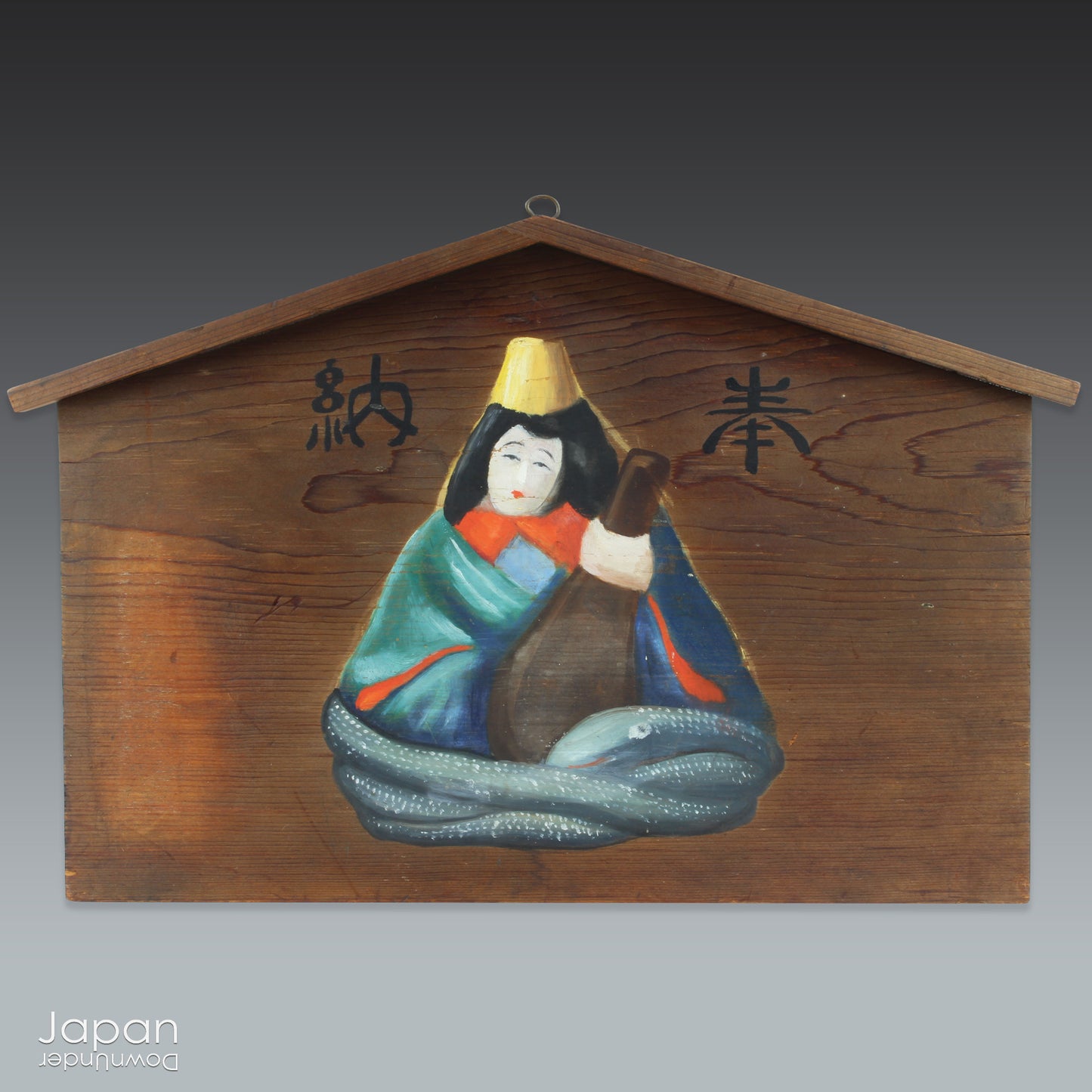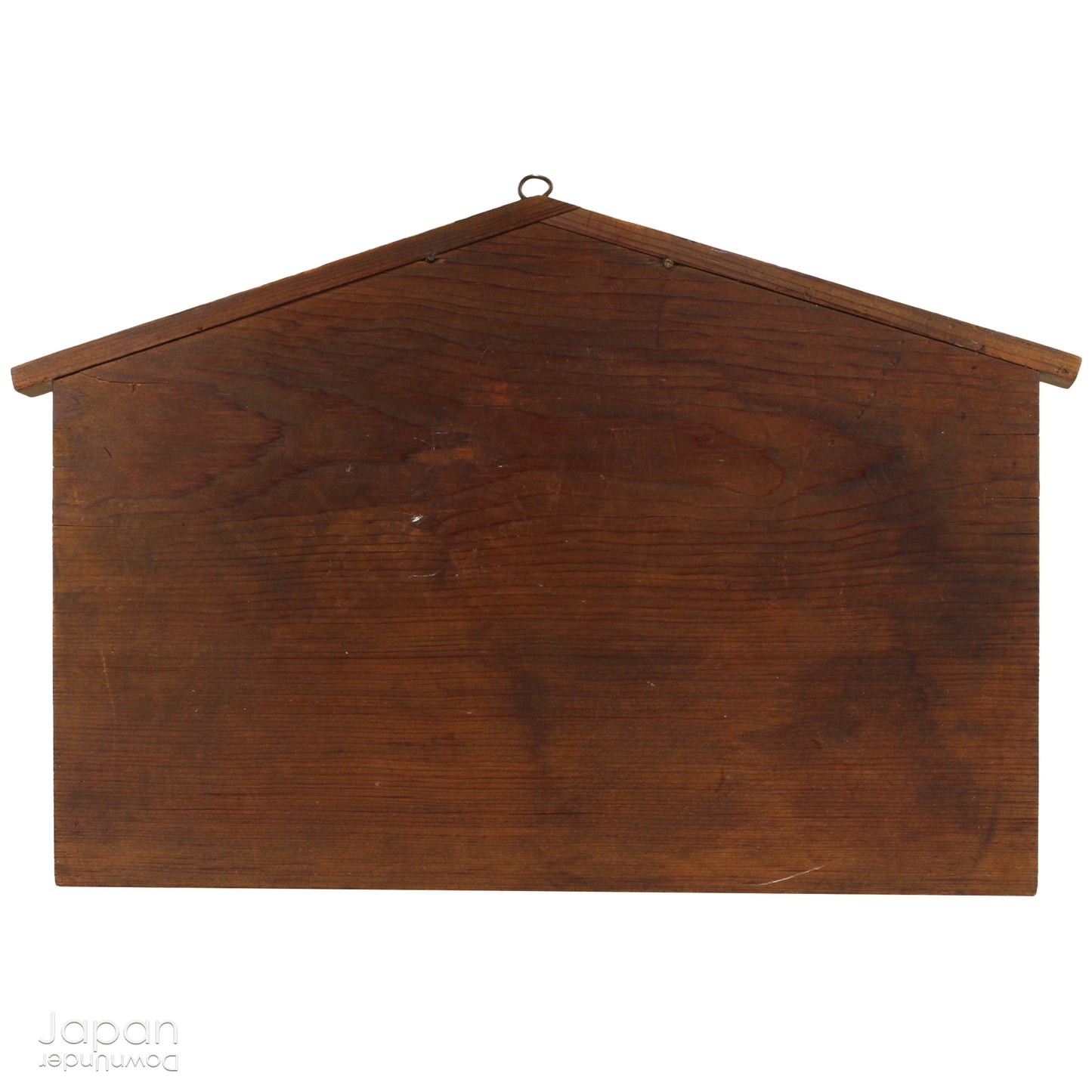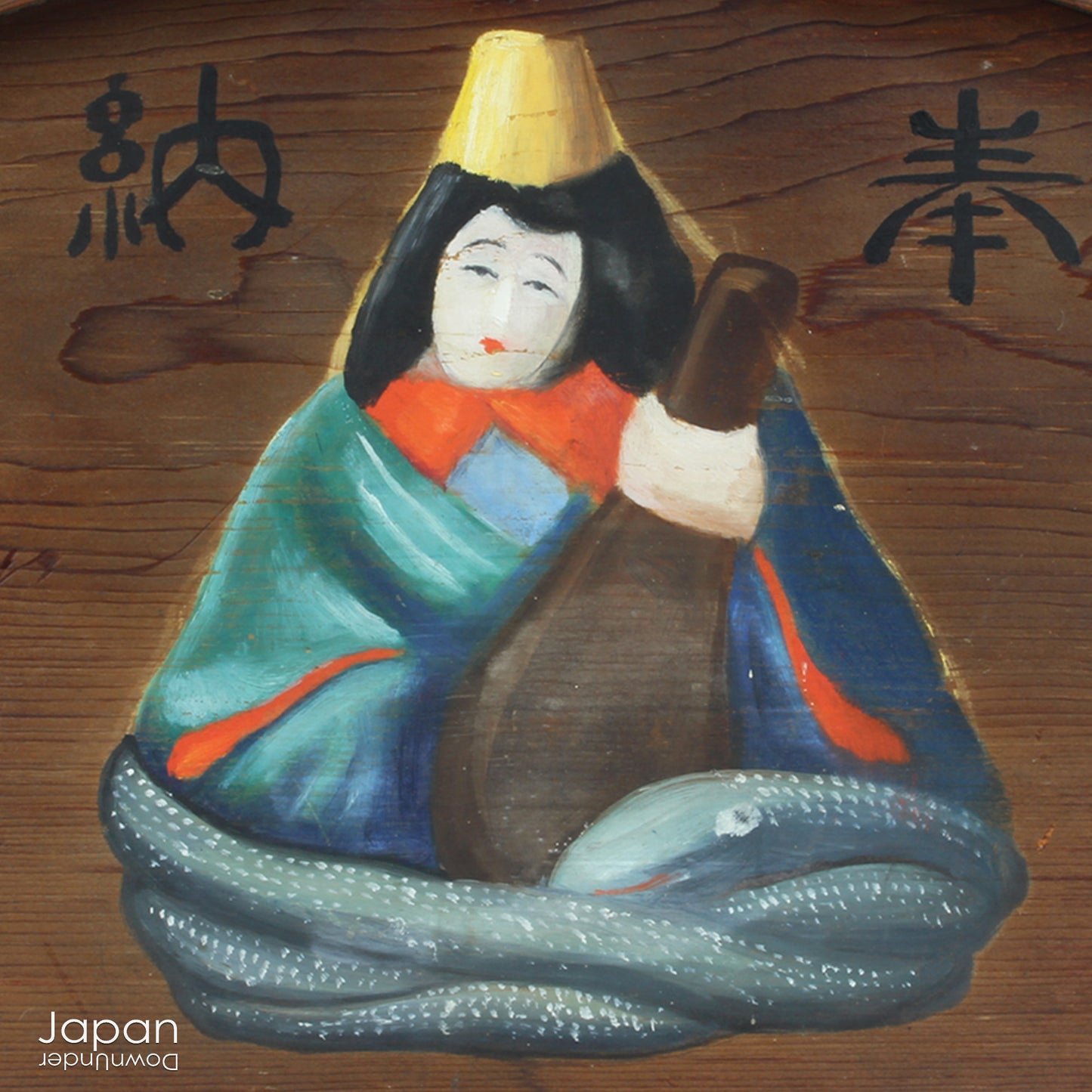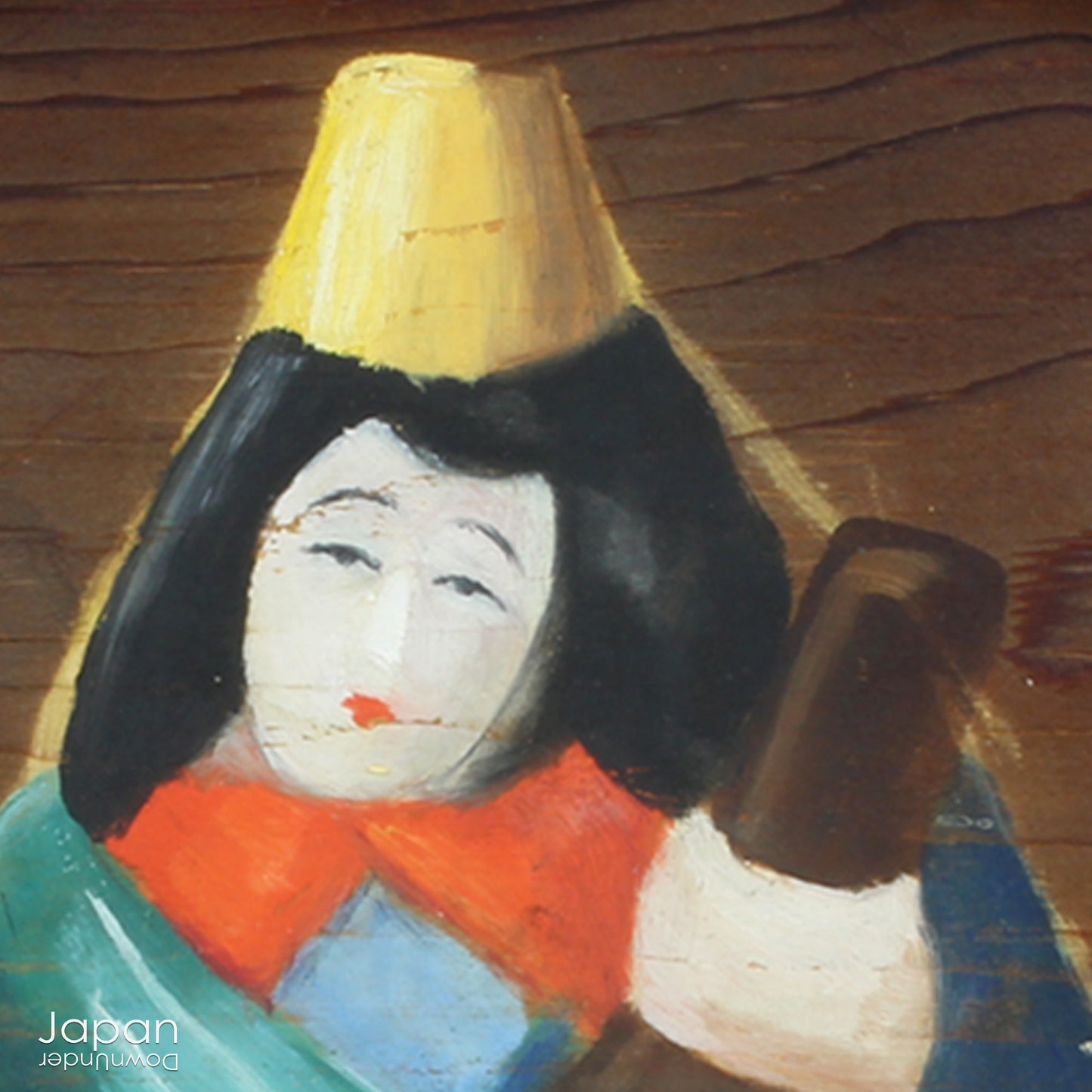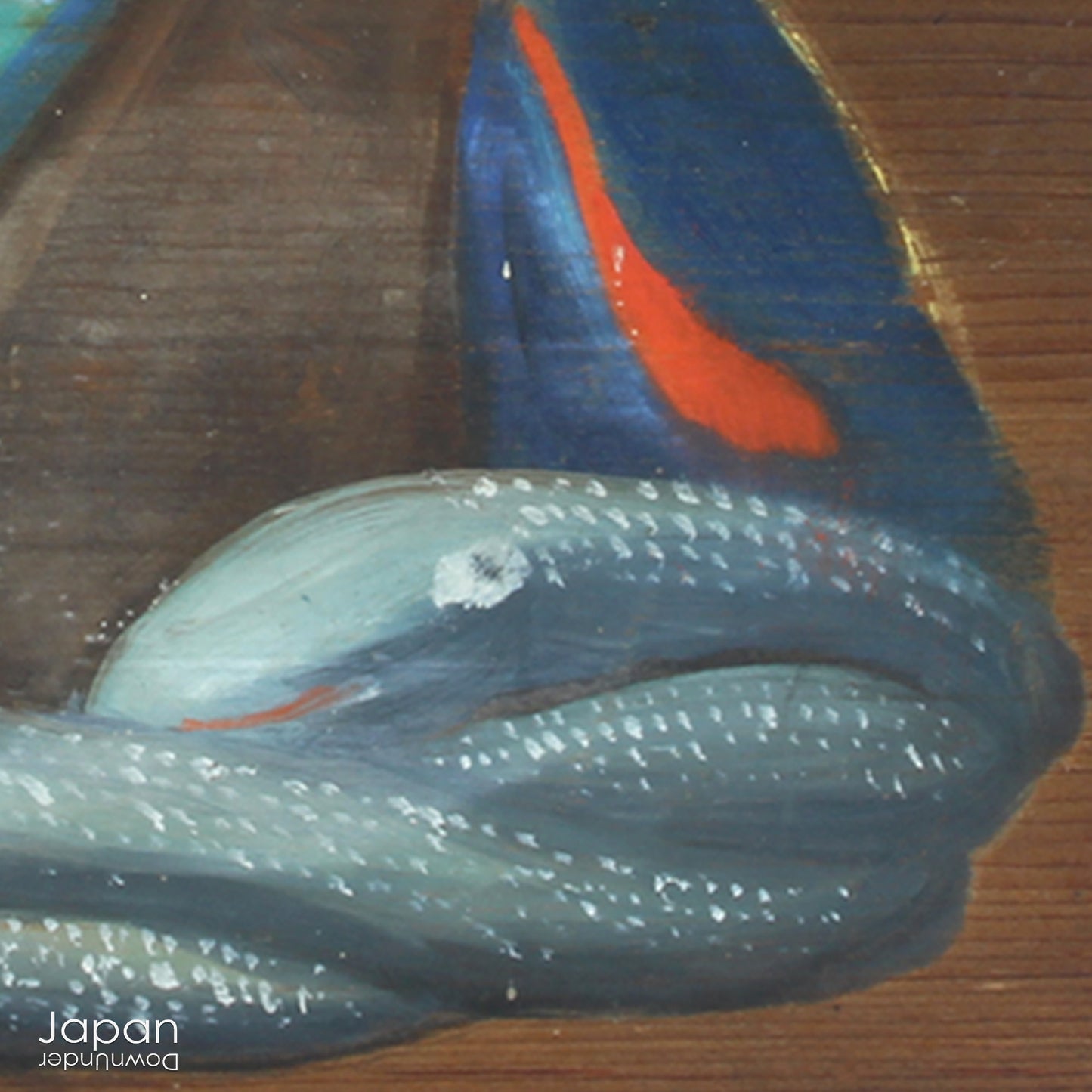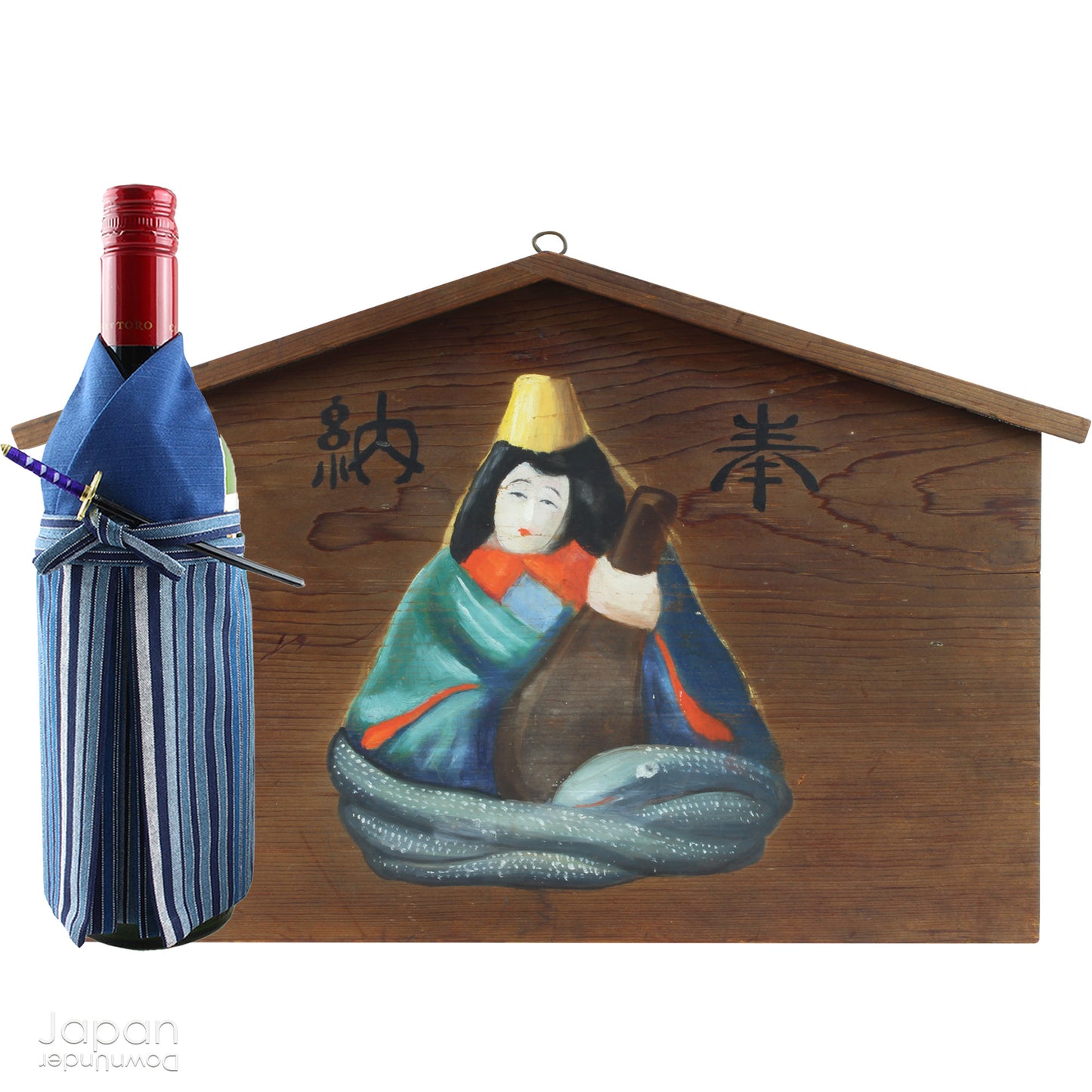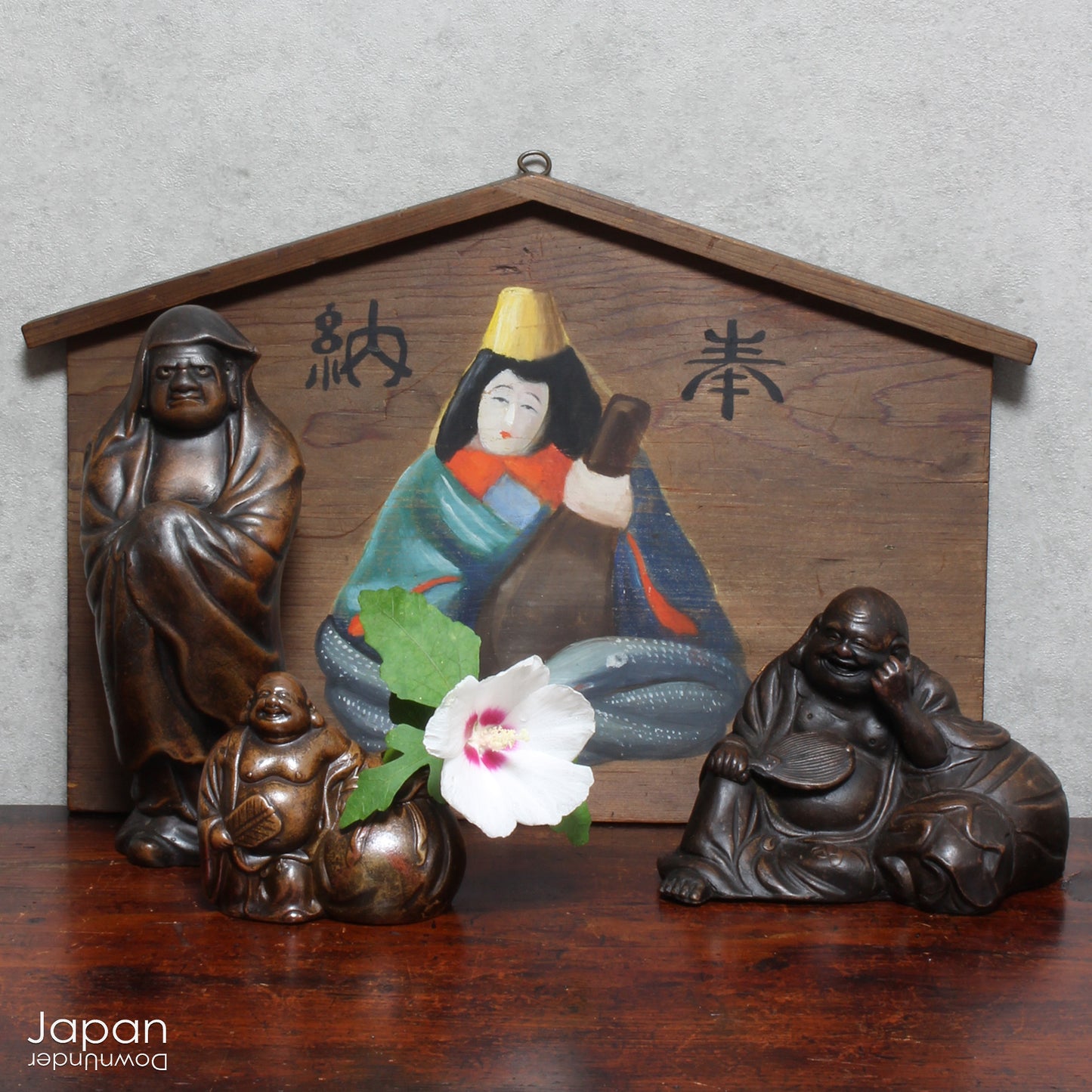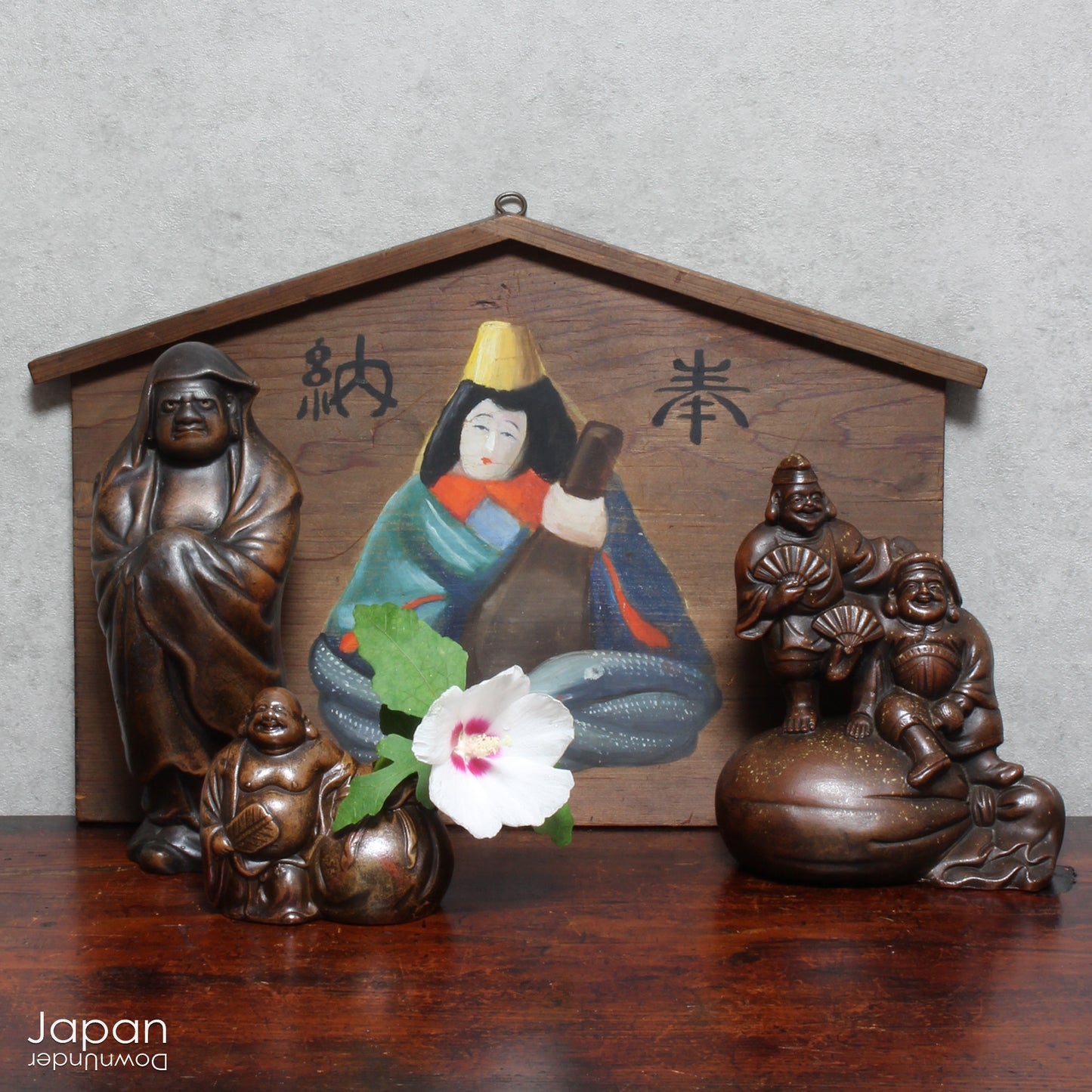My Store
large japanese antique benzaiten votive plaque painting - lucky god of love, arts & commerce - religious wall art
large japanese antique benzaiten votive plaque painting - lucky god of love, arts & commerce - religious wall art
Couldn't load pickup availability
Love Japanese Style Like We Do
A rare and captivating piece of Japanese folk art, this large antique ema features a beautifully hand-painted image of Benzaiten - one of the Seven Lucky Gods of Japan - goddess of financial fortune, music, and the arts. Steeped in tradition and spiritual meaning, this unique offering was originally donated to a Shinto shrine, embodying the cultural and devotional practices of its time.
Ema meaning "picture horse," were originally wooden votive plaques offered at shrines in place of a live horse, a sacred animal believed to carry the gods and divine messages. These plaques, shaped like the gabled roofs of horse stables, were traditionally adorned with horse imagery. Over time, the artwork evolved to include a variety of auspicious and religious motifs.
In this striking example, Benzaiten is depicted seated in a serene pose, wrapped in a flowing blue cloak with a snake coiled around her form - symbols of transformation and protection. She cradles a biwa, a traditional Japanese lute, reinforcing her association with the arts, prosperity, and blessings in love and commerce. The kanji Hōnō (奉納), meaning “dedication,” is prominently written on the front, signifying its original purpose as a spiritual offering to the gods.
The natural wood has developed a beautiful patina over time, enhancing its rustic charm. The plaque remains in good condition, with a metal fitting at the top for easy display.
A wonderful example of mingei - Japanese folk art rooted in everyday life - this ema is not only a meaningful cultural artifact but also a striking decorative piece. An exceptional find for collectors, Japanophiles, or anyone drawn to objects with soul and story.
- measures 41 cm (16.5”) across x 27 cm (10.6”) tall x 2 cm (0.8”) thick at roof.
- weighs 450 gm.
SHIPPING INFORMATION
- please read the shipping notes in our shop announcement.
- we use recycle packaging wherever possible and wrap for safety, rather than appearance!
ABOUT OUR VINTAGE AND ANTIQUE ITEMS
We list pieces we feel are worthy of display. There may be scratches, dents, fading and signs of wear and tear. We try to explain the condition of each item exactly, but may miss something.
Information regarding the item and it’s age is obtained from dealers and our personal research. We do our best to give you the correct information but please be aware that we cannot guarantee this information.
Please message us prior to purchase with any questions you may have about our products.
BENZAITEN
Benzaiten is both a Buddhist goddess and a Shinto kami (god or spirit). Most commonly, she is associated with luck and wisdom, dispensing wise words and fortune to those she blesses. A joyous figure, she is rarely pictured without her biwa, a type of Japanese lute. She is muse to artists of all varieties, and her blessings are sought by farmers hoping for a bountiful harvest, merchants hoping for good yields, and women hoping for success in love.
During the Edo period (1603-1868), Benzaiten was especially popular with jealous women hoping to gain favor over their rivals. She is a goddess of all that flows: wisdom, music, water, love, knowledge, wealth, and the march of time itself.
Benzaiten commonly appears as a woman dressed either as a courtesan or nun, carrying her biwa and sometimes cloaked in various Buddhist halos and other holy symbols, both physical and spiritual. She is associated with both dragons and snakes and also with the appearance of comets in the sky.
Benzaiten is worshiped at both Shinto shrines and Buddhist temples. She is one of the Seven Lucky Gods, usually the lone female of the group, and is said to join these other deities as they travel around Japan bringing luck, good fortune, and compassion to the people.
Some shrines and temples dedicated to her specifically include Itsukushima in the Seto Inland Sea, Enoshima Island in Sagami Bay, and Chikubu Island in Japan’s central Lake Biwa. These are known as Benzaiten’s Three Great Shrines.
EMA
These votive plaques date to the reign of the Emperor Suinin. It was this ancient leader that instituted the use of haniwa clay figures in lieu of live burials when tombs were built for the wealthy. The horses (shimme) that were previously placed in the grave then came to be gifts to shrines. They were thought to be horses for the gods to ride. It wasn't long before these ‘gift horses’ became more trouble than they were worth. The next logical step was making a replica of these shimme and so the wooden ema votive plaque came into being. Ema, literally means picture horse.
Shimme can still be found at some very large shrines, where they lead a life of luxury in stables situated in the grounds of the god's earthly abode. But invariably, a second building is not far away, the ema-do, a building specifically constructed to hold and display the many votive plaques given to the shrine over the years.
The majority of ema were wood plaques, simply fashioned in the shape of a two dimensional gabled roof stable with a prancing steed or two inside. Gradually they came to be painted with animals of the zodiac, good luck images, deities, such as Kannon and Jizo and other specific icons depending on their intended purpose.
Prayers and wishes are written on the back of the ema and they are left hanging up at the shrine, where the gods are believed to receive them. They are then ritually burned at special events, freeing the wish from the writer.
Ema are an art of the common people, a form of folk painting that can be regarded as a wonderful Japanese mingei.
MINGEI
Mingei are the tools and utensils that were used daily by the common people in Japan. They were inexpensive, simple and functional. Usually produced by hand, in large quantities, their artists were anonymous. They became representative of the local area where they were produced.
The word Mingei combines “min” meaning common people and “gei” meaning art - the art of the common people. It was coined by the Japanese philosopher Sōetsu Yanagi. He found beauty in ordinary crafts for daily use and argued that true beauty could be found only in the objects made by unknown people, in a spirit of selfless innocence and in close harmony with nature.
Share
